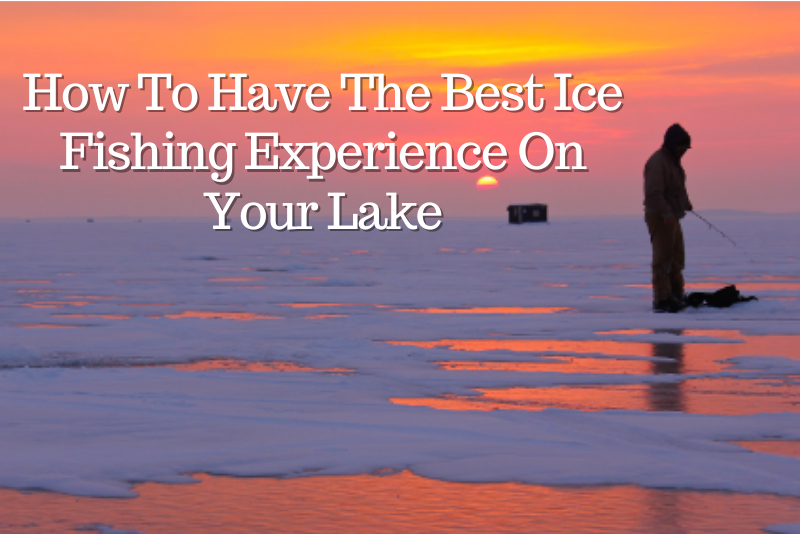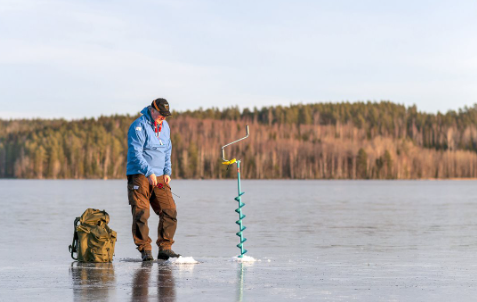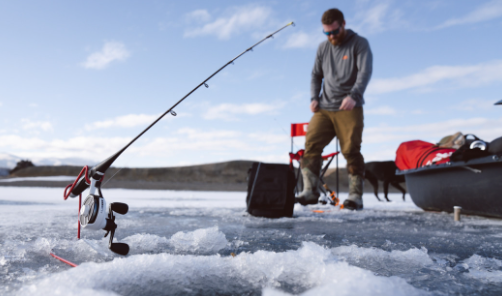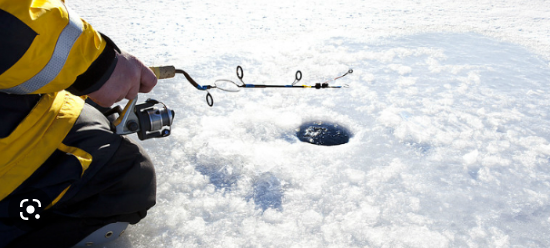
So summer has come to an end. The boat is winterized, the docks are pulled, and the daylight is disappearing faster each day. If you live in the colder climates this is a yearly reality for all lake home owners. Not to fear though, lakefront living can be enjoyable year round, even when the water is frozen over. Not only can you gather friends and family for ice skating, but when the lake freezes a whole new season of sport is born…ice fishing!

Ice fishing is a rewarding past time, but you do not want to be on the cold ice without the right preparation. You need the essential ice fishing gear to pierce through the ice. Once you’re through the ice, you need the ice fishing tackle to start catching fish. We have some recommendations on a few of the basic items needed to ensure a positive winter lakeside experience.
First and foremost, dress properly. Even a balmy 30 degree day in the sun can get uncomfortably cold without the right clothing. It is important to layer upper body as well as your lower body. Water resistant gloves, 2 pair just because. Wool socks, snow boots, a head covering and neck warmer. Wind resistant coats and snow pants should be atop warm moisture wicking items. Remember, before the actual fishing part begins, a hole has to be bored into the ice. You will most likely have a bit of a temperature spike doing that, being able to remove layers is important.
Believe it or not one of the most important items you will need is a 5 gallon bucket (or two). Not only do they make a great place to store smaller items you may need, you can keep your bait fresh, and it can double as a great seat! Of course many outdoor stores carry upgraded buckets that are insulated and have cushion seats, but a regular bucket will serve you well for starting out.
Basic tools like a hand ice auger, slush scoop, metal cleats, ice picks, and a good knife are key. It may sound like a lot of gear compared to fishing off the dock in the summer, but it will be a futile trip without any of those items. To make it fun load everything into a sled and secure with nylon straps-not rope. Rope can be a magnet for fishing hooks, and when you are all bundled up, the less time out of the gloves the better.
The variables we need to consider when picking an ice rod and reel can depend on many factors. To keep it simple the most important factor for beginners is the length of the rod. The longest rod you’re likely to ever string up for ice fishing is 48 inches long, and most will be significantly shorter. To a certain extent, rod length correlates with your target species: most panfish rods fall into the 20- to 30-inch range, walleye rods are frequently 32- to 36-inches long, and apex predators, like pike and lake trout, are often best pursued with rods that are 40- to 48-inches long. Another common ice fishing tool is a Tip-Up.Tip-up ice fishing is a method of fishing that sets a baited line below the ice. Strikes are detected without the need to be in the immediate area of the equipment. A trigger mechanism flips up a flag, indicating a fish has taken the bait. Fish are pulled up by hand through the hole in the ice. If you are fishing right outside your lake home, you could set it up and watch for the flag from inside!
Either ice fishing method will need the right swimming lures. Made of metal, swimming lures for ice fishing are thin and flat, with a fluke at one end to give them a swimming motion. Adding a spring bobber is helpful. The bobber’s buoyancy helps to smooth out the jerkiness of jigging small jigs, spoons, and swimming lures up and down and also helps detect when fish take the bait. This aspect can be useful when wearing gloves while fishing or in other situations where it’s necessary to rely on sight instead of touch to detect when you have a bite.

Please beware of newly formed ice when ice fishing. Ice should be frozen hard to a depth of at least 3 inches before you step out on it and not be covered with a layer of water or snow or have pressure cracks. Ice tends to be thinner at the shoreline, around rock piles or weed beds, near the mouth of an incoming stream, or over a sub-surface spring. Ice fishing can be a fun way to extend your lakefront home enjoyment. The fishing season doesn’t have to end when the water freezes over. With some basic gear and knowledge you can get out on the ice and try a new sport.
“Posted by Scott Freerksen – The Lake Guy”



